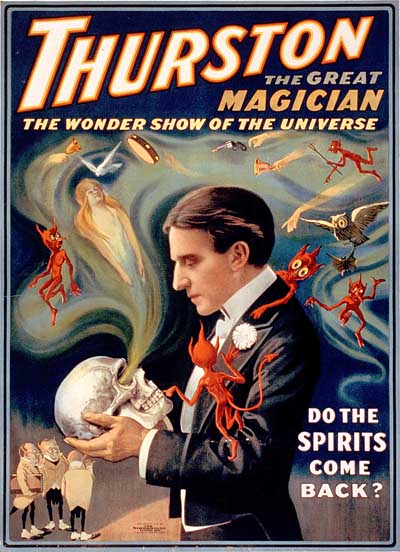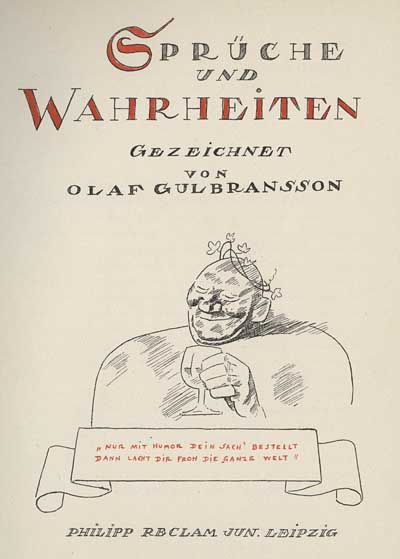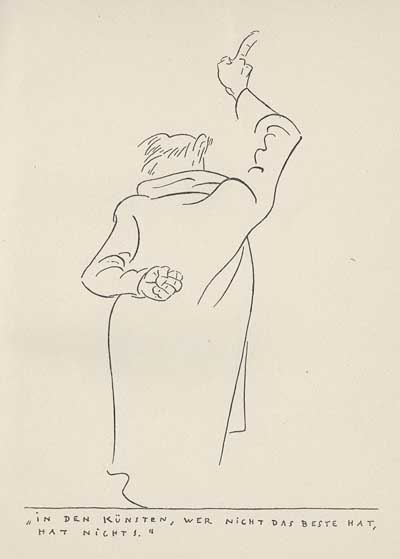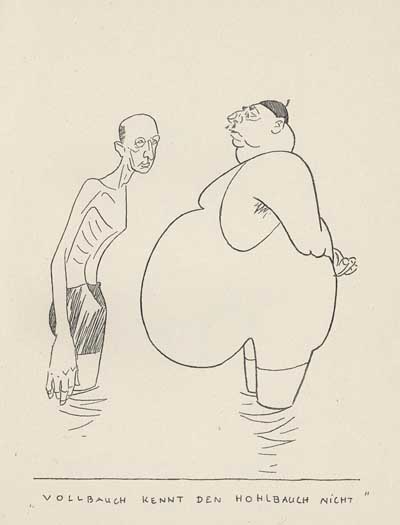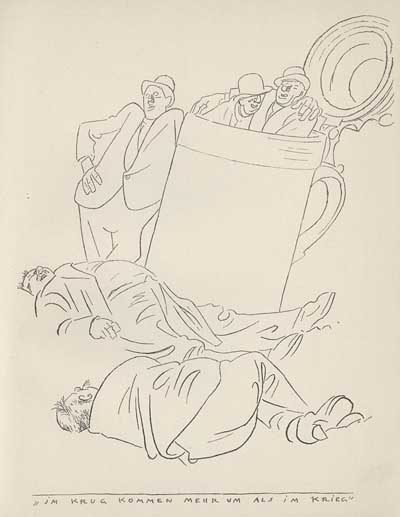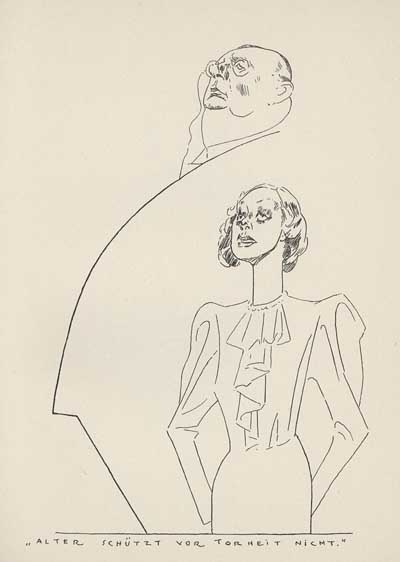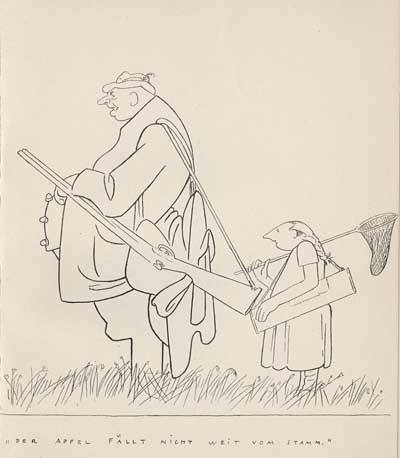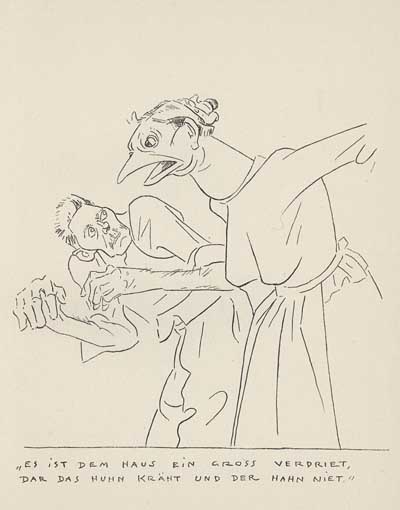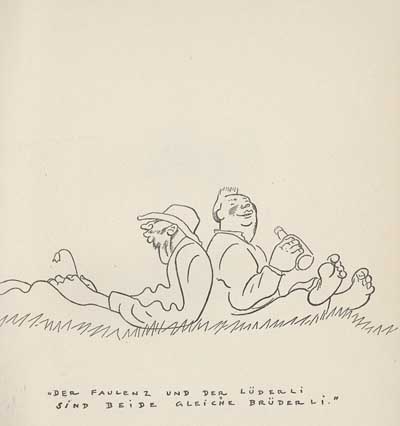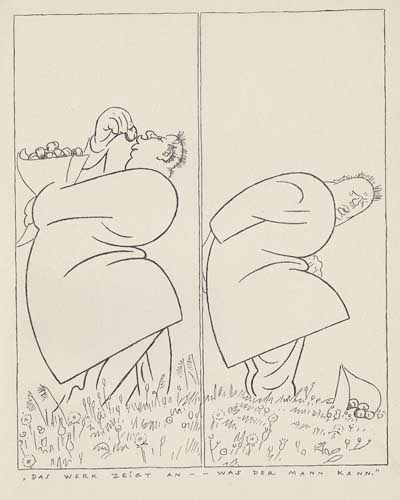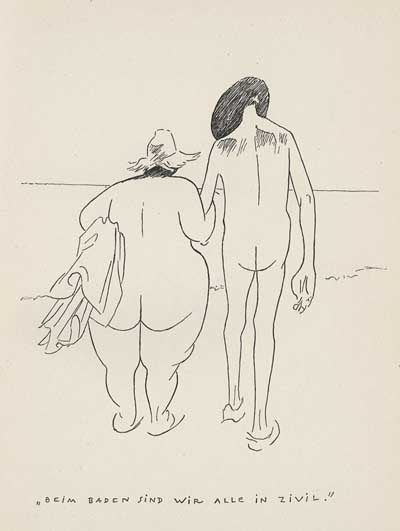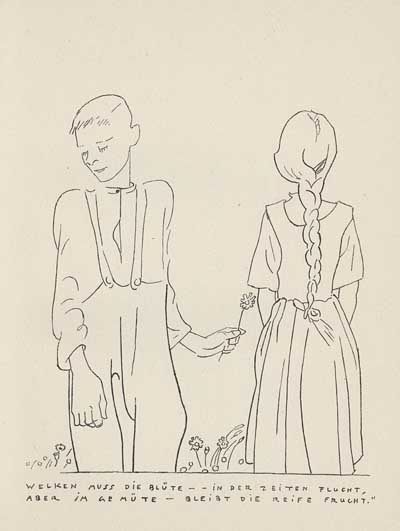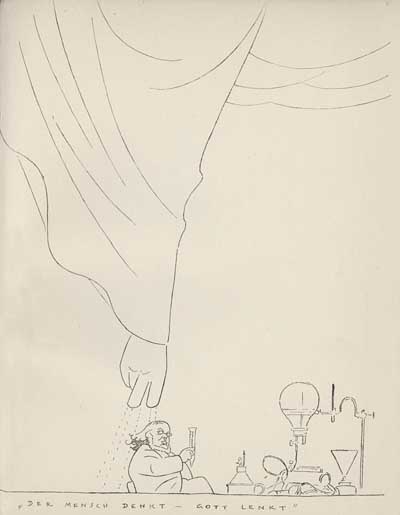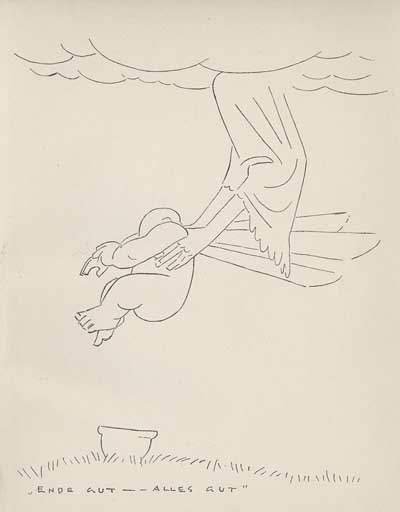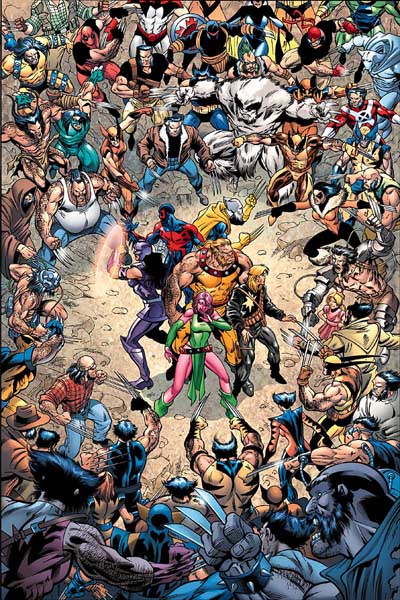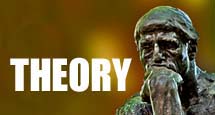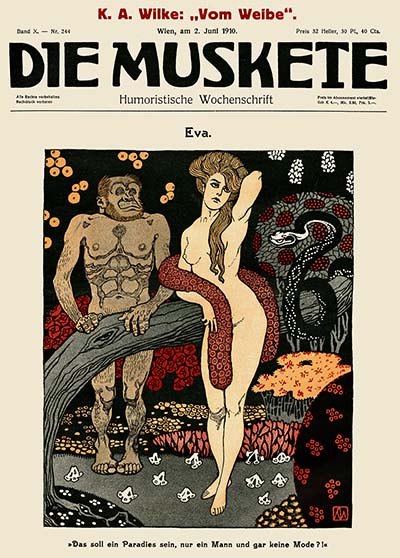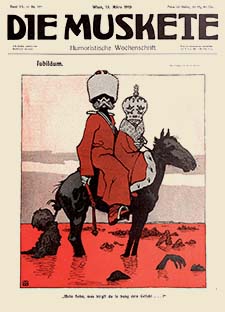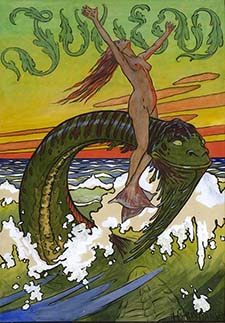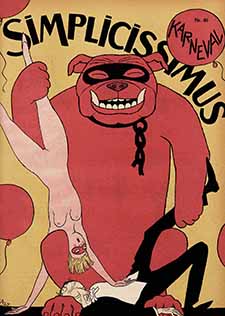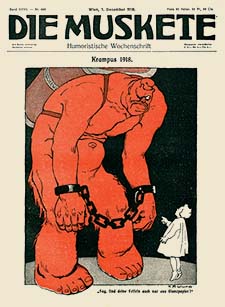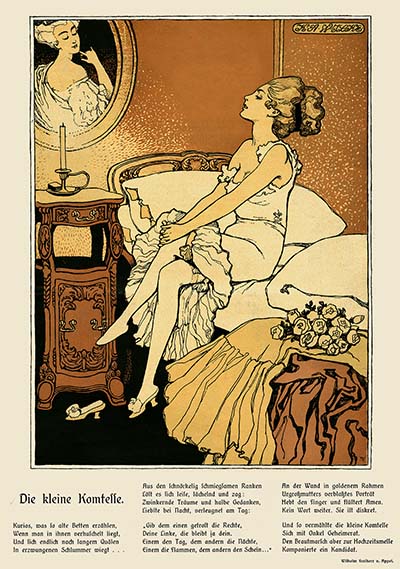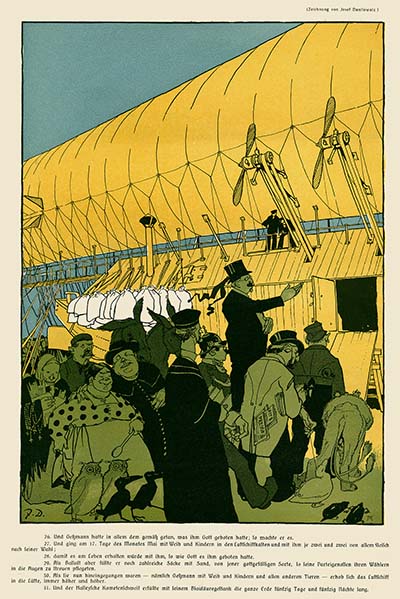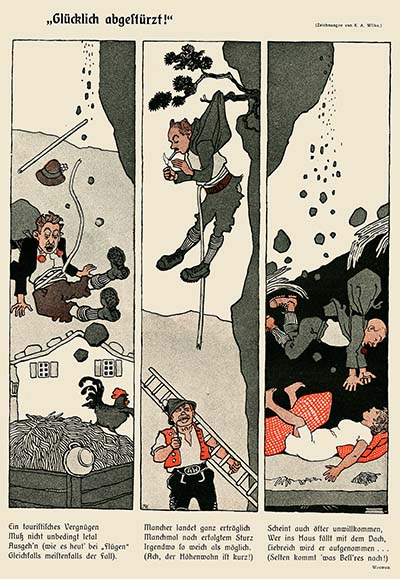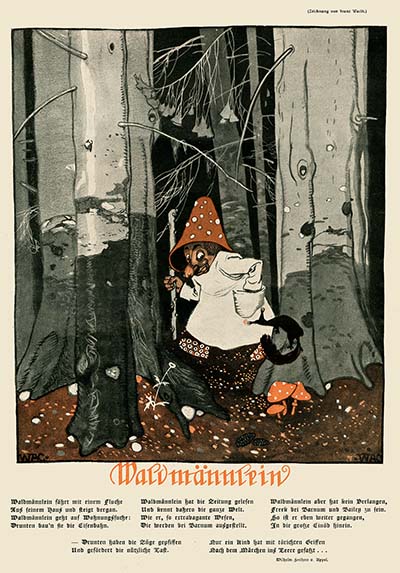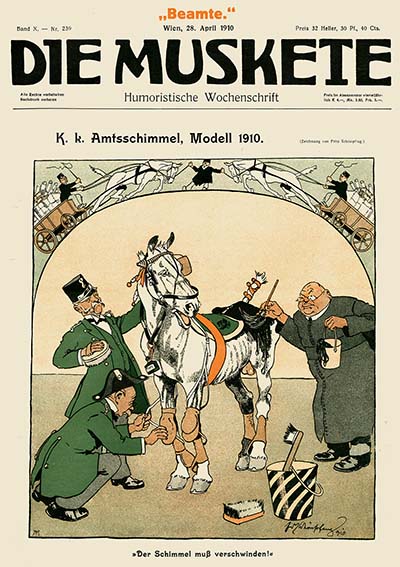The average person who looks at a drawing doesn’t see the thought process that goes into creating it. He just sees the image. If you don’t understand the principles that go into organizing a piece of art, the act of drawing appears to be magic. That’s why moronic displays like this continue to amaze non-artists…
Any artist knows what’s going on here. The performer has simply memorized a formula that he’s playing back along with plenty of empty flourishes and simulated drama. No thought process is going on. It’s just spitting out a predetermined image in a way that impresses people who have no clue about how real paintings are created. It’s just a simple magic trick, and it’s only amazing if you don’t know how the trick is done.
Stage magic is an art form, not unlike drawing and painting in some ways. The difference between mediocre magicians and great ones isn’t the cleverness of their “tricks”… it’s the quality of their application of the fundamental techniques of magic. These principles are organized to create a convincing illusion. Here is a wonderful example of that concept in action, by the brilliant magician, Teller…
Teller’s partner, Penn Jilette narrates the fundamental principles of magic that Teller is employing to create a magical illusion of normalcy. The average person viewing these actions on the street might not see anything out of the ordinary; but when we know what’s going on, it becomes amazing. Knowing how the trick works makes the magic more amazing, not less. That’s REAL magic.
The audience is as much responsible for the effectiveness of the illusion as the performer. A skilled magician leads the viewer through a series of actions which set up a certain expectation. When something completely different happens, it seems like magic. But without the expectation, the magic would dissolve into simple random occurrences. In this next clip, Penn & Teller reveal all their secrets and still manage to create a mystifying illusion. We can see how it’s being done with our own eyes, but Penn & Teller’s compelling direction of the action and our own expectations are so strong, we’re still surprised.
It isn’t the trick… it’s the skill with which the fundamental principles are applied to create an illusion. Truly great drawing is like that.
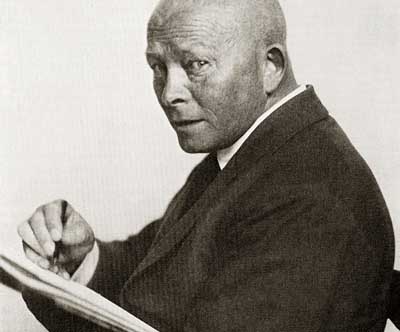
I’m going to introduce you to one of the most magical cartoonists who ever lived. Odds are, you’ve never heard of him. His name was Olaf Gulbransson, and he was a cartoonist for the German satirical magazine Simplicissimus between the early years of the 20th century and the second World War. I’ll have more biographical information on him in a later post. But today, I want to get straight to showing you his amazing drawings.
Gulbransson’s sketches are simple line drawings… but they are deceptively simple. The images have been refined down to a few quick lines, but their simplicity and directness masks a depth of thought and planning that is almost superhuman. Here are a few sketches from Gulbransson’s Spruche und Wahrheiten (Sayings and Truisms) from 1939.
In art, he who is not the best is nothing.
In the cartoon above, notice how a single line defines the right cuff, elbow, arm, shoulderblade and fabric tension. It is very difficult to depict a strong pose from the rear- especially when draped in a long heavy coat. But Gulbransson pulls it off dramatically in a few sweeping lines.
The full belly does not recognize the empty belly.
He is a master of exaggeration and caricature.
More die in the bottle than the war.
Notice how he depicts the weight of the bodies lying on the ground, along with the pull and drape of the clothing covering them. The characters are grouped into a visual hierarchy, directing the eye from the foreground up to the drunks inside the stein at the top. Even though the shapes are open and plain, the volumetric structure is clearly defined. Some artists would render an image like this out with hatching, shading and lots of detail, but Gulbransson pulls it off with a remarkable economy of line.
There’s no fool like an old fool.
A single line defines a silhouette, frames a character and leads the eye through the composition. The specific attitude of the characters and the stark contrast between their sizes enhances the irony of the caption.
The apple doesn’t fall far from the tree.
Look at all those appealing organic shapes! Again, the contrast in scale puts across the humor in the caption.
In the home, usually the chicken crows and the rooster clucks.
Complementary lines of action, solid drawing, specific attitudes, strong poses, beautiful negative spaces, clear silhouettes…
The lazy and the idle are like brothers.
…rhythmic line, texture, personality…
A man is judged by his actions.
…clear staging, line of action, flowing shapes…
When we bathe, we’re all equal.
…keen observation of real life, contrasts…
The bloom must fade in time, but in the mind, the fruit never withers.
…and sophisticated interaction defining the relationship between characters. Gulbransson could do it all- sometimes he did it all in a single brilliant drawing like this one!
Man thinks. God leads.
His compositions are powerful and unique…
All’s well that ends well.
…and he has a clear point of view. Who else would depict life’s end with an angel lifting a baby off a chamber pot?!
The average person loves detail and complexity. It makes them feel like they’re getting their “money’s worth” from a drawing. But to me, putting everything across with simplicity is even more amazing. The artist can’t hide behind details piled upon details, shading and cross hatching. His idea is presented naked and clear for the world to see. It’s like Penn & Teller doing the cups and balls with transparent cups. Real magic.
Stephen Worth
Director
Animation Resources
This posting is part of a series of articles comprising an online exhibit entitled Theory.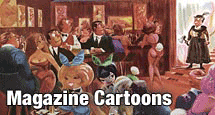
![]()
This posting is part of the online Encyclopedia of Cartooning under the subject heading, Magazine Cartoons.














